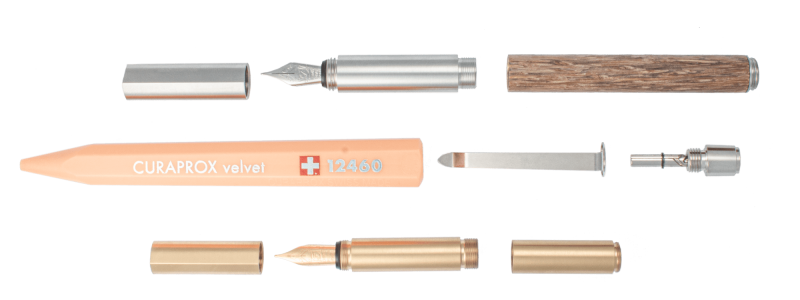It's #inyourhands

Sustainability
I feel a deep personal responsibility for the impact my business has and how I can contribute to moving Kayu towards sustainability. I have long wondered how I can justify devoting my time and energy to a business focused on making beautiful, high-quality, expensive things, rather than directly advocating for improvements in the areas of the environment, social justice, or the climate crisis.
It wasn’t until I worked with the Pábení design studio that I was able to clarify the most important things: For entrepreneurship to be acceptable to me today, it doesn’t necessarily have to be directly related to conservation or social work. But they must make a fundamental commitment: The goal of business is its regenerative function, which British economist Kate Raworth has named in her excellent book Doughnut Economics. The goal of business is to use profits to grow the business while returning resources back to the environment where the business operates.
Kayu didn’t come to shine, to rock, to make money, to eventually sell out and then fly off to Bali to practice yoga and sip coconut juice. I will do everything I can to support local development, communities and the countryside. And to do that, we will need products that incorporate this philosophy.

Modularity
And when something breaks, which it sometimes does, we invent everything so that every part can be replaced with a new one and avoid throwing away entire products because of one mistake. All Kayu writing instruments have easily replaceable parts that you can replace yourself at home in almost all cases.
Materials
Stainless steel is not exactly an ideal ecological material. We don’t have to lie to ourselves or to you. However, compared to aluminium or titanium, for example, which we have used in the past, its carbon footprint and environmental impact is many times lower. In addition, the stainless steel used for the Kayu Nikini is great for its strength and durability. For the Kayu Egino, we use a little more brass to reinforce the barrel of the solid but reused wood. The body of the Kayu Cura is then completely upcycled from failed Curaprox brushes with only the refill, clip and click mechanism added. We completely abandoned the magnets, which while very sexy, are only made in China, can suffer from corrosion over time, and don’t contribute to the overall durability of the design.


Cases
Any extra packaging is unnecessary material. That’s why I decided to design the whole package in such a way that we minimize the packaging materials completely. Thus, you usually don’t receive Kayu stationery in a box, which mostly goes straight to the trash. I came up with the idea of placing the pen in the Kayu Delo notebook so that we would not need any more packaging besides the box at the post office. A notebook is included in the price of most pens.
Durability
Durability is the first and most important characteristic of any product that wants to be sustainable. We think about the design so that at the end of it there is a pen that will last for years. Whether thanks to the materials chosen or thanks to the solid construction with a minimum of parts prone to breakage.
Authenticity
We mean what we say out there. I try not to differentiate between talking with a friend or publicly on social media. Maybe some people won’t like it sometimes, but but I have to count wit this. For me that’s what truthfulness and integrity is all about.
Locality
Kayu focuses on both the localisation of production and the redistribution of resources. We use recycled wood for the Kayu Egino, upcycled plastic for the Kayu Cura, and we buy our nibs and other writing components as close and as high quality as possible: in Germany.
We invest our free time back to our place of residence in Nedvědice pod Pernštejnem, where we are active in the ROSPUK association and the Jasan School. We are doing everything we can to be able to expand our support and increase it significantly financially.
Not-For-Profit
This is our big goal. No, it’s not a non-profit, it’s a not-for-profit. In other words, it’s a company that purposefully makes a profit, which it uses for its own development – in that it’s the same as a for-profit company. The main difference is that any remaining profit is not swallowed by owners, shareholders and other investors, but is returned to the ecosystem by funding activities, associations or foundations that turn the money into regenerative economic and social power. I am convinced that if we want to change the set economic-environmental course, this is one of the promising ways to really get things moving. It’s going to be tough, it’s not going to be easy and Kayu has a long way to go before she gets here. But what would business be without vision? Keep your fingers crossed.

